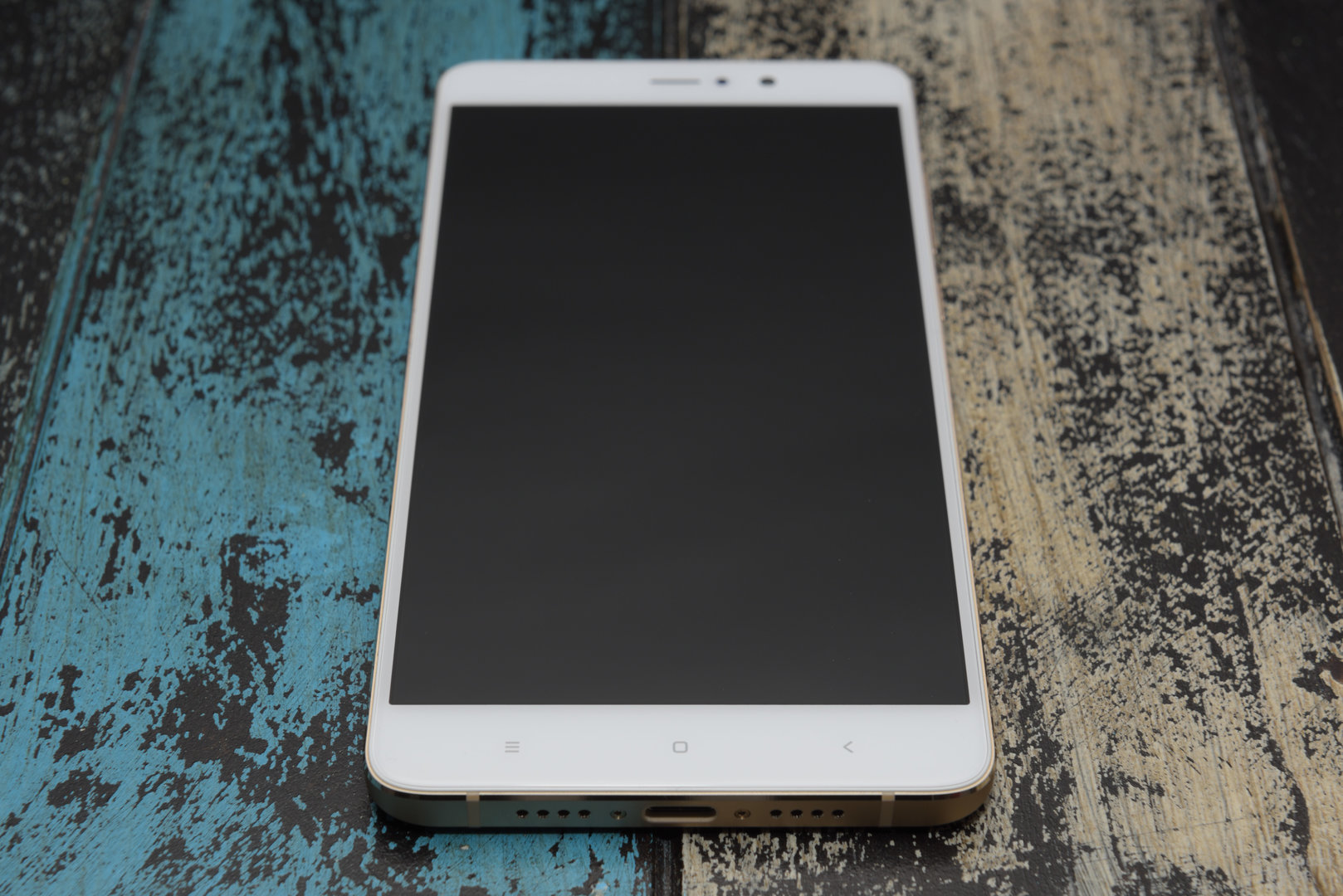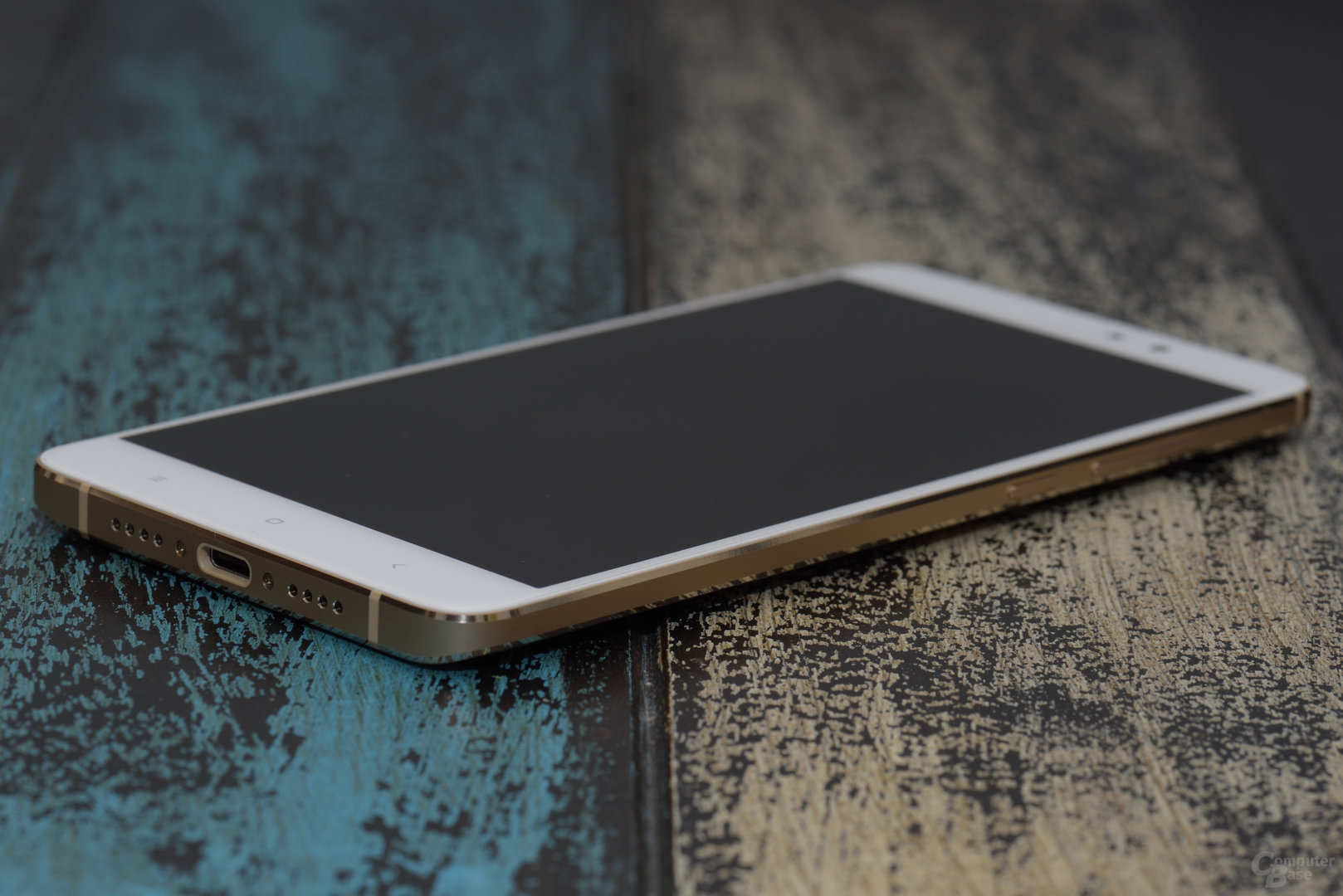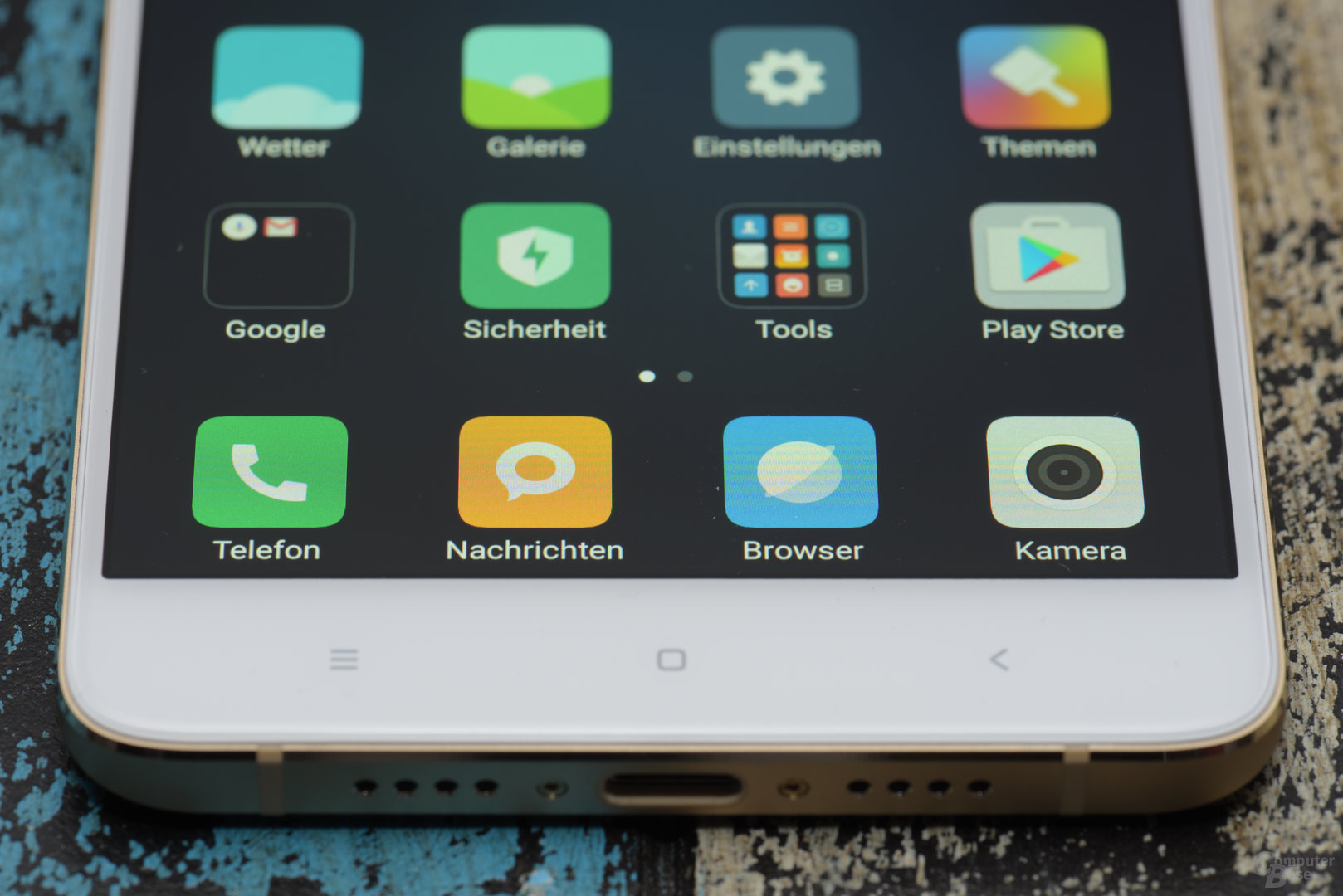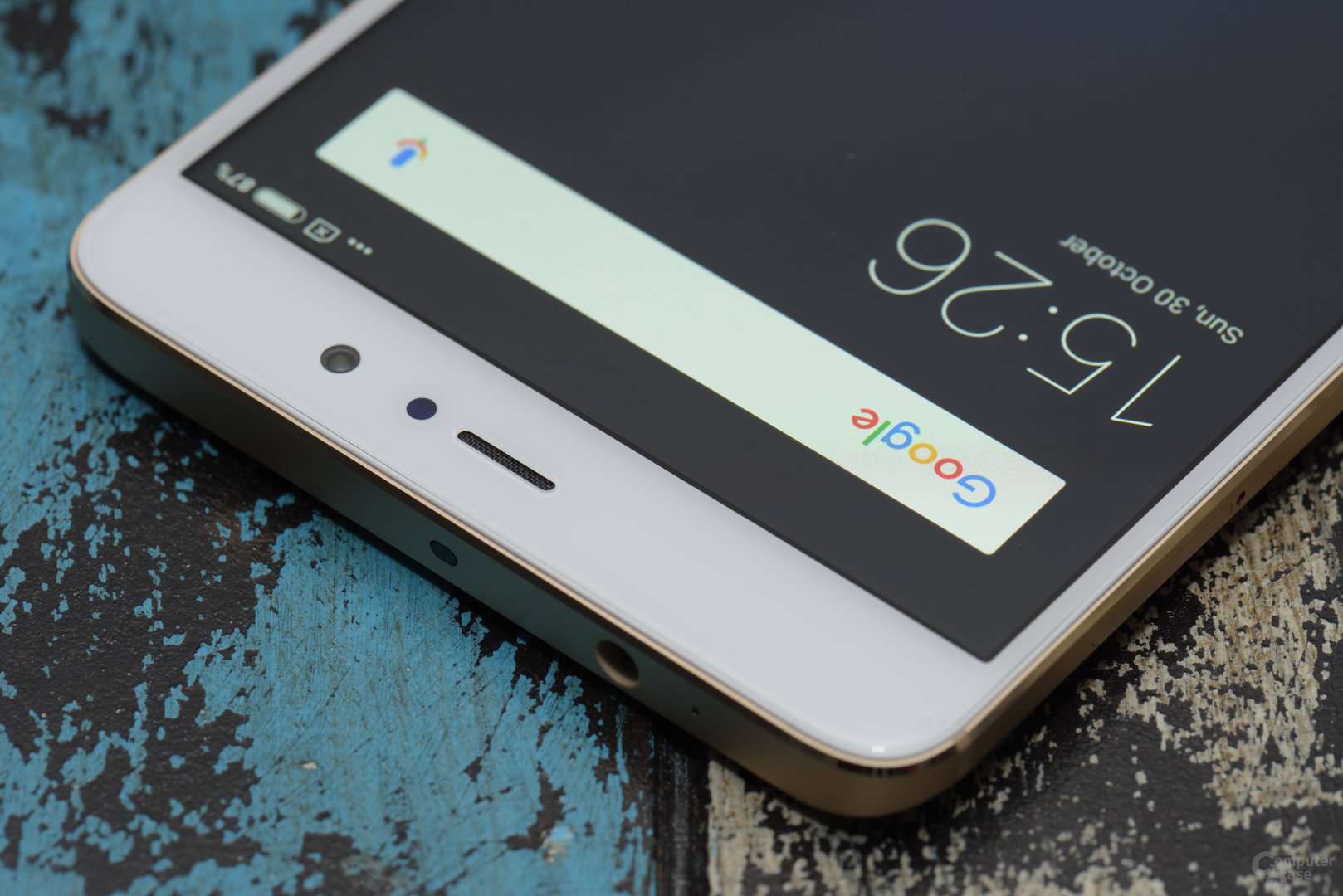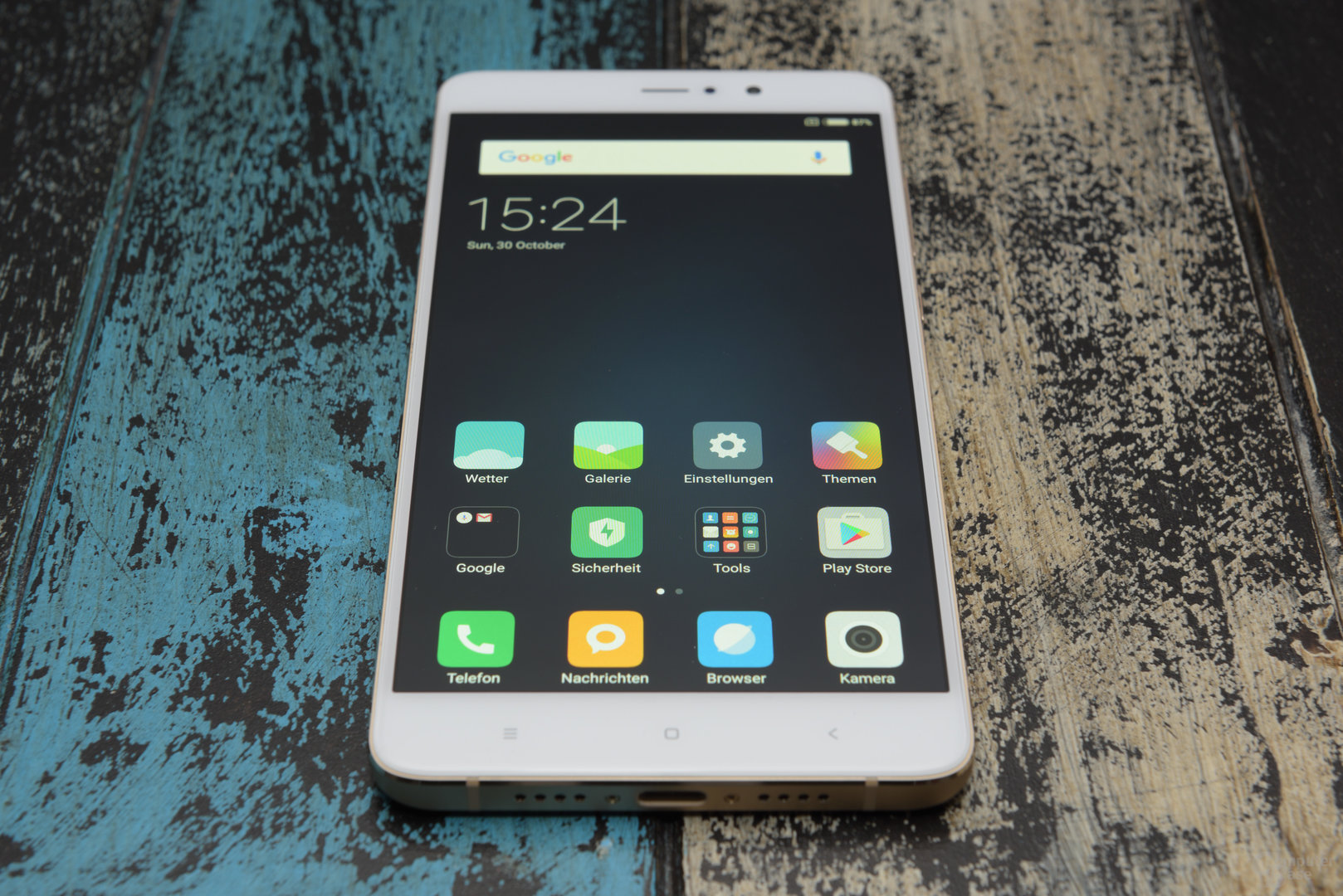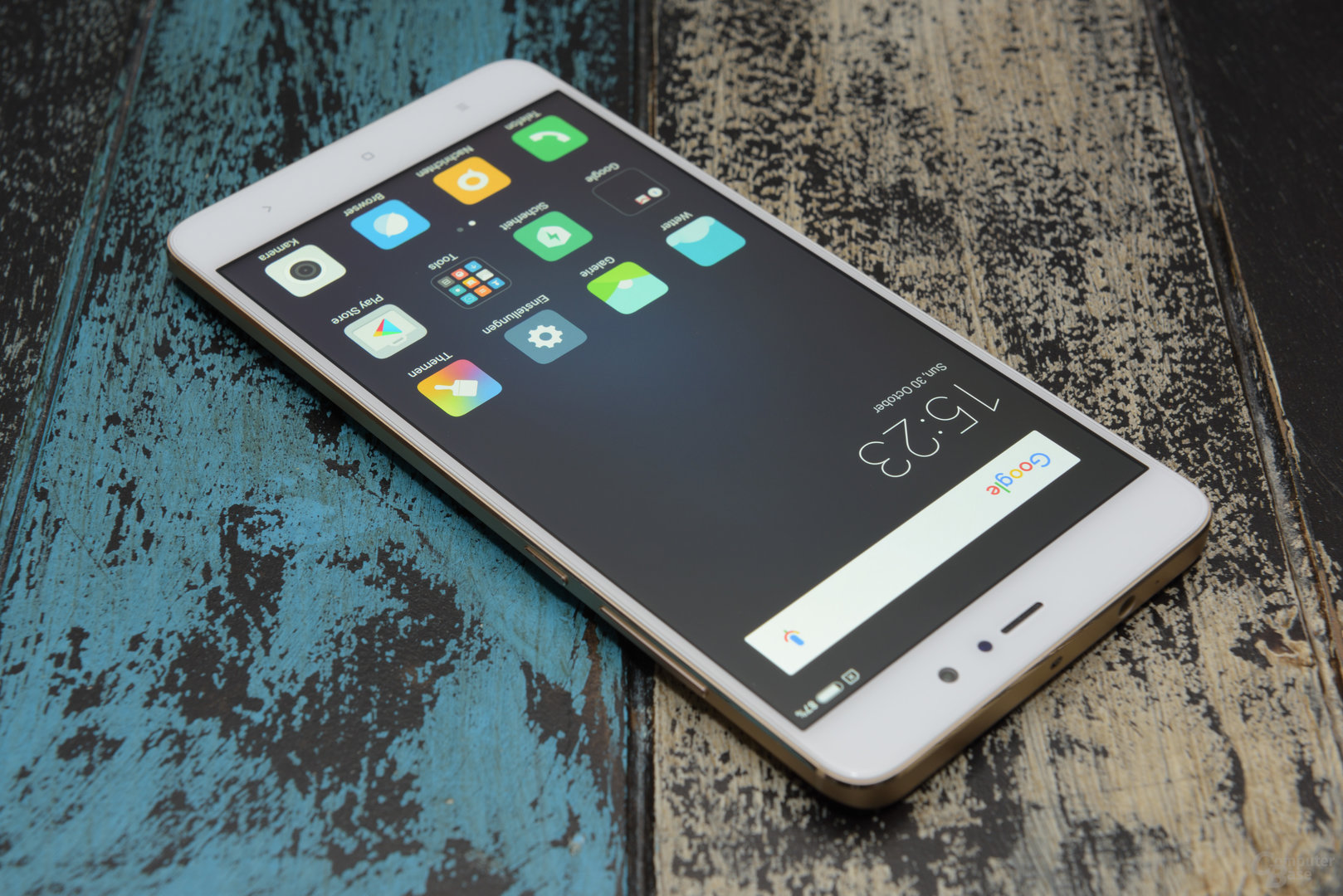Xiaomi Mi 5s Plus im Test: Viel Leistung, Speicher und Dual-Kamera im Alugewand
2/5Hochwertig, aber uninspiriert
Die Formsprache des Smartphones erinnert an das Mi 5. Nebem dem zum Rand leicht gewölbten Glas ist auch die Rückseite gebogen. Anstatt Glas oder Keramik wie in der Pro-Version kommt beim Mi 5s Plus aber in allen Ausführungen Aluminium zum Einsatz. Wie beim Mi5 ist das Verhältnis von Display zur Front insgesamt gut: Trotz der Diagonale von 5,7 Zoll ist das Smartphone kürzer und nur minimal breiter als ein iPhone 7 Plus mit 5,5 Zoll.
Von der optischen Gestaltung wirkt das Smartphone generisch, die abgerundete Rückseite ist in ähnlicher Form bereits von HTC aus der One-Reihe, den Mates von Huawei oder dem OnePlus 3 sowie einigen weiteren Modellen, darunter auch Xiaomi-Smartphones wie das Redmi Note 3, bekannt. Die Verarbeitung ist über jeden Zweifel erhaben: Die Übergänge sind gleichmäßig, die Anschlüsse präzise ausgearbeitet und die Spaltmaße passgenau.
Auch die Tasten verfügen über einen kurzen Tastenhub und klaren Druckpunkt. Am unteren Ende integriert der Hersteller drei kapazitive Tasten. Diese leuchten bei Betätigung, bei Lichteinfall ist die Beleuchtung aber schlecht zu erkennen. Die Ränder sind geschliffen und verleihen dem Smartphone eine edlere Anmutung. Das goldene Testexemplar setzt auf gebürstetes Aluminium, andere Farben gibt es auch mit mattem Finish.
Durch die bauchige Rückseite liegt das Smartphone gut in der Hand, insgesamt wirkt es stabil und widerstandsfähig. Im Lieferumfang legt Xiaomi eine günstig anmutende Plastikrückschale bei. Diese ist sehr dünn und geht nur an den Ecken über die Ränder, verleiht dem Smartphone aber immerhin zusätzliche Griffigkeit. Die Verarbeitung des Mi 5s Plus überzeugt und wird dem Anspruch an ein Topmodell gerecht. Auch wenn die Optik uninspiriert wirkt, sind Materialwahl und Aufbereitung tadellos.
Sehr helles Full-HD-Display
Trotz der großen 5,7-Zoll-Diagonale des Bildschirms bleibt Xiaomi bei Full HD. Die 1.080 × 1.920 Pixel resultieren somit in einer Bildpunktdichte von 386 ppi und liegen damit unter den Werten der Konkurrenz, die zum Großteil bereits auf auf 1.440 × 2.560 Pixel (QHD) setzt. Die Schärfe reicht auch im Alltag problemlos für eine angenehme Darstellung. Dafür können hochauflösende Medien die Vorteile von mehr Pixeln nutzen, und im direkten Vergleich fallen die Unterschiede bei genauer Betrachtung auf – es geht aber in Ordnung. Zudem profitiert auch Virtual Reality wie Google Daydream von mehr Pixeln, und auch Xiaomi ist mit den VR-Brillen Mi VR und Mi VR Play vertreten. Für Daydream freigegeben ist das Mi 5s (Plus) nicht.
Das sehr helle Display lässt sich einstellen
Die Darstellungsqualität überzeugt: Die Blickwinkel sind stabil und die Farben kräftig, dabei allerdings nicht unnatürlich. In den Einstellungen kann der Nutzer den Kontrast mit den zwei Modi „Normal“ oder „Kontrast erhöhen“ festlegen oder automatisch an die Lichtverhältnisse anpassen lassen. Die maximale Helligkeit ist mit 652 cd/m² sehr hoch und genügt für Ablesbarkeit auch in starkem Sonnenlicht. Der Kontrast (im Modus „Kontrast erhöhen“) ist mit 1.304:1 gut, aber nicht ähnlich überzeugend, was vor allem an dem hohen Schwarzpunkt von 0,50 cd/m² liegt. Der Weißpunkt ist mit 6.900 Kelvin vergleichsweise natürlich mit leichter Tendenz zu einem kühlen BIld.
Im Modus „Normal“ sinkt die Helligkeit um rund 40 cd/m² und auch der Kontrast auf 1.224:1, das Bild wird dann etwas wärmer dargestellt. Der Weißpunkt sinkt in diesem Modus auf etwa 6.300 Kelvin, insgesamt wirkt die Darstellung im Modus „Kontrast erhöhen“ lebendiger.

